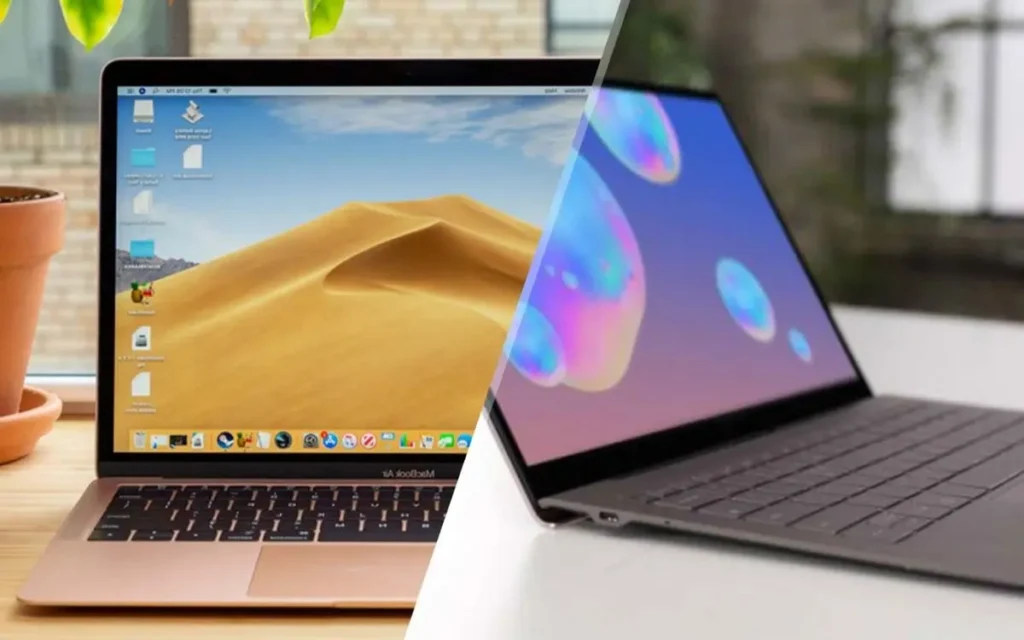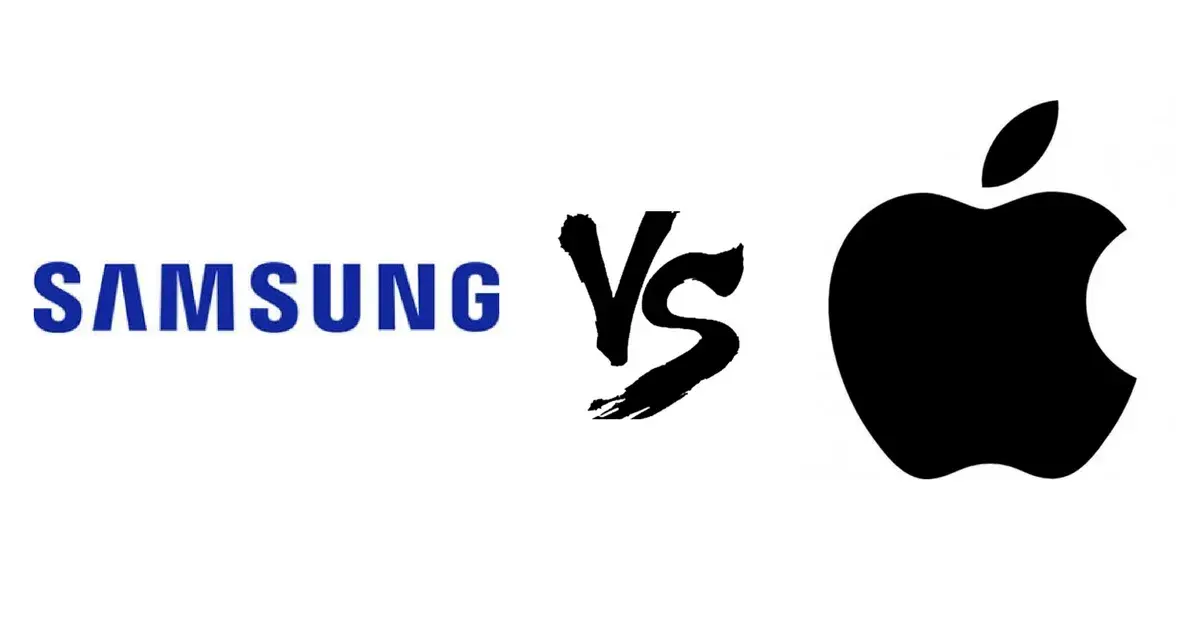Table of Contents
Technology is advancing at an unprecedented pace, and top electronics brands are at the heart of this transformation. Among the leaders, Apple and Samsung have set the benchmark for innovation, shaping how we interact with devices in our daily lives. Their rivalry extends across smartphones, tablets, and groundbreaking technologies, making them two of the most dominant forces in the industry.
This article provides a detailed comparison between Apple and Samsung, exploring their flagship products, design philosophies, and competitive strategies. As two of the top electronics brands, their influence on the market is undeniable, and understanding their strengths and weaknesses offers insight into the future of consumer technology.
Leading Smartphones from Top Electronics Brands
Smartphones have become the centerpiece of the rivalry between these top electronics brands. As of Q4 2024, Apple and Samsung controlled the largest portions of the global smartphone market, each holding approximately 18% market share. Apple shipped around 232.1 million iPhones, while Samsung followed closely with 223.4 million units.
While Apple’s sales surge was driven by strong iPhone 16 demand, Samsung’s numbers reflected a diverse portfolio, catering to both premium and budget-conscious consumers. The battle between these top electronics brands is far from over, with each company constantly pushing boundaries to outdo the other.
Apple
Apple’s smartphones are known for their premium design, seamless ecosystem, and long-term software support. The iPhone lineup emphasizes performance, security, and ease of use, making it a top choice among consumers.
1- iPhone 16 Pro Max
- Chipset: A18 Bionic for top-tier efficiency and AI-powered processing.
- Camera: Triple-lens system with LiDAR and Night Mode enhancements.
- Display: 6.7-inch OLED ProMotion display (120Hz refresh rate).
2- iPhone 16
- Chipset: A18 Bionic with optimized battery life.
- Camera: Dual-camera system with Smart HDR.
- Display: 6.1-inch OLED screen.
3- iPhone SE (2025)
- Chipset: A17 Bionic, delivering solid performance at a lower price.
- Camera: Single 12MP lens with computational photography features.
- Display: Compact 4.7-inch Retina panel.

Samsung
Samsung offers a diverse range of smartphones, catering to premium users, tech enthusiasts, and budget-conscious consumers. Its devices are known for cutting-edge displays, camera versatility, and software customization.
1- Galaxy S25 Ultra
- Chipset: Exynos 2500 / Snapdragon 8 Gen 3.
- Camera: 200MP primary sensor with periscope zoom.
- Display: 6.8-inch Dynamic AMOLED with 120Hz refresh rate.
2- Galaxy Z Fold 5
- Chipset: Snapdragon 8 Gen 3.
- Camera: Triple-camera system with improved low-light performance.
- Display: 7.6-inch foldable AMOLED (main), 6.2-inch external screen.
3- Galaxy A75
- Chipset: Exynos 1500, delivering balance between performance and cost.
- Camera: 64MP main sensor with ultrawide lens.
- Display: 6.5-inch Super AMOLED.
Both Apple and Samsung continue investing in AI-powered assistants, with Apple upgrading Siri for deeper AI integration and Samsung enhancing Bixby within its One UI ecosystem. Their strategies reflect a continuous push for innovation in the competitive smartphone market.
Flagship Tablets from Top Electronics Brands
As of Q4 2024, Apple led the global tablet market with a 31.7% share, while Samsung held 17.9%, reflecting the strong competition between these top electronics brands in the portable computing space.
Apple Tablets
1- iPad Pro (M2)
- Chipset: M2 chip for high-performance computing and graphics.
- Display: 12.9-inch Liquid Retina XDR display with ProMotion (120Hz).
- Features: Supports Apple Pencil (2nd gen) with hover functionality and Magic Keyboard integration.
2- iPad Air (2024)
- Chipset: M1 chip, delivering power efficiency and fast performance.
- Display: 10.9-inch Liquid Retina display.
- Features: Supports Apple Pencil (2nd gen) and Smart Keyboard Folio.
3- iPad (2024)
- Chipset: A15 Bionic, balancing performance and affordability.
- Display: 10.2-inch Retina display.
- Features: Compatible with Apple Pencil (1st gen) and Smart Keyboard.
Samsung Tablets
1- Galaxy Tab S9 Ultra
- Chipset: Snapdragon 8 Gen 2, optimized for gaming and multitasking.
- Display: 14.6-inch Super AMOLED with a 120Hz refresh rate.
- Features: S Pen with magnetic charging and Samsung DeX support.
2- Galaxy Tab S9+
- Chipset: Snapdragon 8 Gen 2, delivering powerful performance.
- Display: 12.4-inch AMOLED screen with vibrant colors.
- Features: Supports S Pen and multi-window multitasking.
3- Galaxy Tab A9
- Chipset: Exynos 1380, designed for everyday use.
- Display: 10.5-inch LCD screen.
- Features: Long battery life and One UI customization.
Both Apple and Samsung continue to innovate in the tablet market, with Apple emphasizing productivity and software optimization, while Samsung focuses on display technology and multi-device flexibility.
Smartwatches from Top Electronics Brands
The competition between top electronics brands extends beyond smartphones and tablets to the smartwatch industry, where Apple and Samsung dominate the market. As of Q4 2024, Apple Watch maintained a 27% global market share, while Samsung held 10.3%, making them the leading players in the wearables sector.
Apple Smartwatches
1- Apple Watch Ultra 2
- Chipset: S9 SiP, delivering enhanced power efficiency and speed.
- Display: 1.92-inch Always-On Retina LTPO OLED with 3000 nits brightness.
- Features: Advanced GPS, 36-hour battery life, and extreme sports durability.
2- Apple Watch Series 9
- Chipset: S9 SiP with Neural Engine for improved Siri processing.
- Display: 1.78-inch Always-On Retina display.
- Features: Blood Oxygen monitoring, ECG, and temperature tracking.
3- Apple Watch SE (2024)
- Chipset: S8 SiP, balancing performance and efficiency.
- Display: 1.57-inch Retina OLED.
- Features: Heart rate monitoring, fall detection, and fitness tracking.
Samsung Smartwatches
1- Samsung Galaxy Watch 6 Classic
- Chipset: Exynos W930, ensuring fast and efficient performance.
- Display: 1.5-inch Super AMOLED with rotating bezel.
- Features: ECG, BioActive sensor, and Wear OS integration.
2- Samsung Galaxy Watch 6
- Chipset: Exynos W930, optimized for health tracking and notifications.
- Display: 1.3-inch Super AMOLED.
- Features: Sleep coaching, body composition analysis, and Google Assistant.
3- Samsung Galaxy Watch 5 Pro
- Chipset: Exynos W920, offering a balance of performance and battery life.
- Display: 1.4-inch Sapphire Crystal AMOLED.
- Features: GPS route tracking, 3-day battery life, and titanium build.
Both Apple and Samsung continue to push the boundaries of smartwatch technology, with Apple focusing on ecosystem integration and advanced health tracking, while Samsung emphasizes versatility, Wear OS features, and long battery life.
Premium Laptops from Top Electronics Brands
In the competitive world of top electronics brands, Apple and Samsung have solidified their positions as key players in the laptop market. Their flagship models combine performance, innovation, and sleek designs to cater to professionals, students, and creative users.
Apple Laptops
1- MacBook Pro 16-inch (2024)
- Chipset: Apple M4 Pro (14-core CPU) for top-tier efficiency and high-speed processing.
- Display: 16.2-inch Liquid Retina XDR with exceptional color accuracy and brightness.
- Memory and Storage: Configurable up to 128GB RAM and 8TB SSD, supporting demanding workflows.
- Graphics: Integrated 40-core GPU, suitable for video editing, 3D rendering, and gaming.
- Battery Life: Up to 21 hours of video playback, making it ideal for extended use.
2- MacBook Air 15-inch (2025)
- Chipset: Apple M4, delivering a balance of power and portability.
- Display: 15.3-inch Liquid Retina with vibrant colors and high resolution.
- Memory and Storage: Starts with 16GB RAM and 256GB SSD, expandable for additional needs.
- Design: Slim and lightweight aluminum body, making it ultra-portable.
- Battery Life: Up to 18 hours, ensuring all-day productivity.
Samsung Laptops
1- Galaxy Book 4 Ultra
- Processor: Intel Core Ultra i9-185H, offering high-end computing performance.
- Display: 16-inch 3K Dynamic AMOLED touchscreen with a 120Hz refresh rate for smooth visuals.
- Memory and Storage: Up to 32GB RAM and 1TB SSD, ideal for multitasking.
- Graphics: NVIDIA GeForce RTX 4070 GPU, optimized for professional creators and gaming.
- Features: S Pen support and Samsung DeX for enhanced versatility.
2- Galaxy Book 5 Pro 360
- Processor: Intel Core Ultra i7-155H, ensuring fast and efficient performance.
- Display: 15.6-inch AMOLED touchscreen with a 360-degree hinge for flexible use.
- Memory and Storage: 16GB RAM and 512GB SSD, providing a balanced experience.
- Design: Ultra-thin aluminum chassis with a convertible design for laptop and tablet modes.
- Battery Life: Optimized for long hours of usage without frequent charging.
Both Apple and Samsung continue to innovate in the laptop market, with Apple focusing on seamless ecosystem integration and high-end performance, while Samsung emphasizes display technology, flexibility, and compatibility with multiple devices.

Strengths and Weaknesses of Apple and Samsung
Apple
Strengths:
- Superior hardware-software optimization, ensuring longevity.
- Brand loyalty, leading to strong repeat customers.
- Ecosystem synergy, allowing seamless connectivity between Apple devices.
Weaknesses:
- High prices, making it less accessible to budget-conscious buyers.
- Limited customization, restricting user control over software.
- Lack of variety, offering fewer device choices compared to competitors.
Samsung
Strengths:
- Diverse product lineup, appealing to different budgets.
- Cutting-edge innovations, including foldable displays.
- Customization freedom, with expandable storage and stylus support.
Weaknesses:
- Software fragmentation, leading to slower Android updates.
- Weaker resale value, compared to Apple’s iPhones.
- Brand loyalty concerns, as some consumers switch brands more frequently.
In the end, Apple and Samsung, as two of the top electronics brands, continue to drive innovation in the tech industry. Apple excels in ecosystem integration and premium design, while Samsung stands out with its diverse product range and cutting-edge advancements. Their ongoing competition pushes the boundaries of AI, smart ecosystems, and foldable technology, shaping the future of consumer electronics.
So, which side are you on in this showdown of top electronics brands?
















